Growing your own vegetables is a surprisingly rewarding hobby that’s good for the mind, body, and soul.
It is not only a fun activity that gives you an excuse to spend more time outside, but it also helps keep your fridge and pantry stocked with delicious (not to mention nutritious) produce. As a bonus, eating crops grown right in your own backyard helps to reduce your carbon footprint, as you’ll no longer be purchasing produce that was shipped from miles away.
But it is wise to begin your vegetable growing hobby with the right seeds. Simply put, some vegetables are easier to grow than others. And while you certainly can start with any veggies you like, you’re more likely to have success, and therefore more fun, if you start with some good beginner vegetable seeds.
We’ll share some of the best choices and explain why they’re so well-suited for beginners below.
The Characteristics That Make Seeds Perfect for Beginners
- The best vegetables for beginner gardeners often have seeds that check a few key boxes. And while very few plants possess all of the characteristics that beginners should seek, the best options usually exhibit several of the following traits:
- The seeds are easy to handle. Many novice gardeners fail to consider how difficult it can be to handle very small vegetable seeds. Tiny seeds are not only difficult to grip, but they may even blow away if the wind blows.
- The seeds are easy to germinate. Some seeds require soaking or stratification – a process by which the gardener mimics the environmental conditions necessary to prime the seed for germination. These processes are laborious at best and downright challenging at worst, so beginners are best served by selecting seeds that don’t require these steps.
- The plant doesn’t suffer from many pests or pathogens. While no vegetables are completely immune to pests or pathogens, some are more likely to suffer these problems than others. You can make things easier on yourself by sticking to vegetables that experience fewer of these problems than others.
- The plant doesn’t require complicated growing or harvesting requirements. Some plants, such as cauliflower, can be very tricky to grow, as they have long growing seasons and rather specific environmental requirements. To avoid frustration, it’s best to stick to plants that don’t require terribly specific conditions.
- The plant is reliably productive. Some plants, with melons being a great example, often produce flowers but fail to yield fruit, either because of inappropriate climate conditions or a lack of pollinators. Save yourself these kinds of headaches by sticking to vegetables that are reliably productive.
11 of the Best Vegetable Seeds for Beginners
Now that you understand some of the things that make some seeds ideally suited for beginning gardeners, it’s time for some examples! The following varieties satisfy most of the requirements discussed above and work well for novices.
1. Loose Leaf Lettuce
Loose leaf lettuce (Lactuca sativa) is an attractive option for beginner vegetable gardeners, as it is an undemanding crop that’s easy to grow and versatile in the kitchen. You can use it for salads, throw it on a sandwich, or wrap up some cold-cuts in it – the choices are endless.
Loose leaf lettuces have a lot of traits that make them perfect for gardening novices. The seeds are a reasonable size and they’re relatively easy to sow. They can be grown year-round in many places, and they don’t take up a ton of room. You can even grow leaf lettuces in containers if space is at a premium.
The best part? Unlike heading lettuces, which you’ll need to harvest in their entirety, loose leaf lettuces can be harvested one leaf at a time. You can also cut the leaves off a few inches above ground level, and then allow the leaves to regrow for later use!
You may have to battle slugs and snails a bit, as they love loose leaf lettuce. However, there are several pesticide-free ways to handle these pests, such as by removing the places they hide from your garden and by collecting them at night with the help of a torchlight. Some gardeners even maintain a flock of free-roaming chickens, who’ll gladly gulp down the slimy invaders!
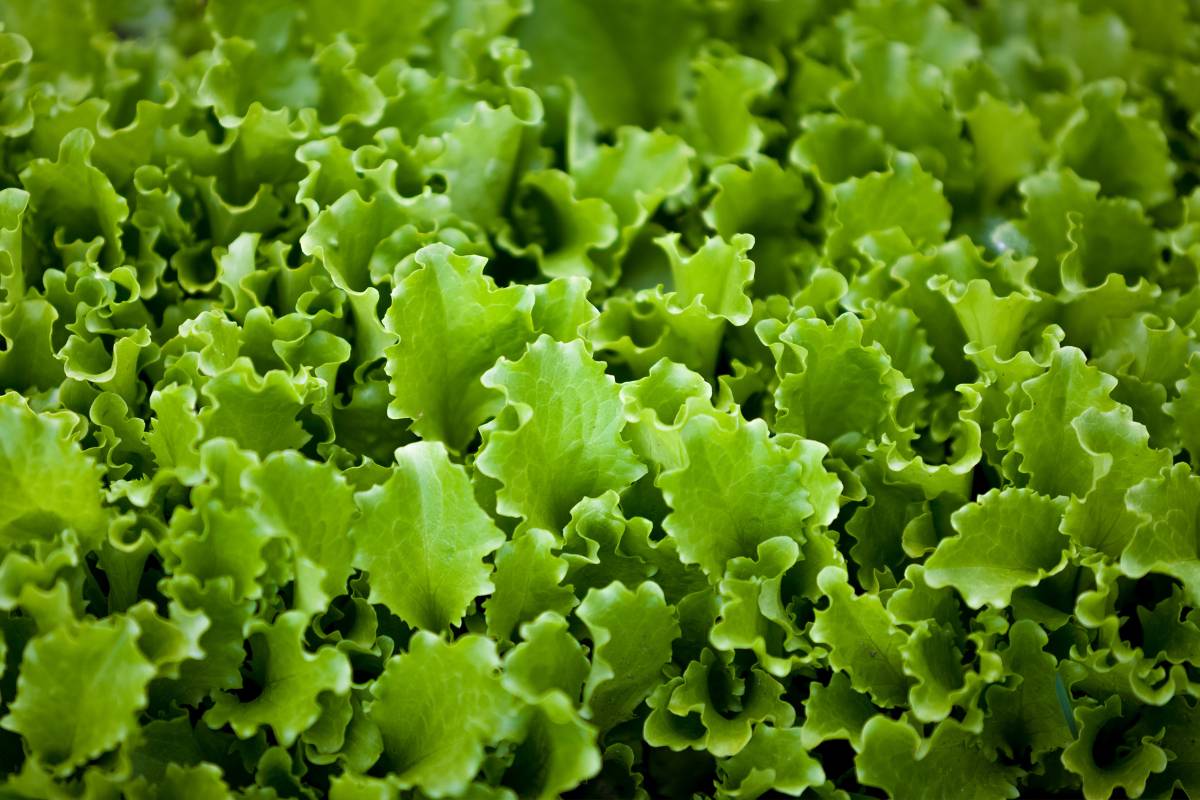
2. Peas
One of the world’s quintessential vegetables, peas (Pisum sativum) are another great option for novice gardeners. The seeds (individual peas) are large and easy to handle, and they don’t present many germination difficulties.
But while most peas are fairly easy to grow, some are easier than others. For example, some peas are climbing plants, while others grow as free-standing bushes. The former require the installation of trellises, while the latter do not. While beginners certainly can opt for climbing varieties, it’s often best to start your pea-growing adventure as simply as possible by sticking to bush varieties, such as ‘Greenfeast’ shelling peas.
No matter the type of pea you select, you’ll need to have a sunny location to grow them – peas generally need at least six hours of sun exposure to thrive. You’ll generally want to sow them in rows, with about 10cm of space between individual seeds and 0.5m of space between the rows. But before you sow the seeds, it’s a good idea to soak them in a cup of water for about 12 hours beforehand, as this often produces the best results.
Note that some peas grow best in slightly alkaline soils. So, check your soil pH before sowing – if the pH is 7 or less, you may want to consider adding lime to increase the alkalinity.

3. Beans
Like peas, beans can also grow in either bush or climbing form. Once again, for the sake of simplicity, it’s best for novices to start with bush-style varieties, though adventurous beginners can certainly opt for climbing versions if you’re not afraid of the additional work. In addition to being available in several growth forms, beans also come in a few different colours, such as Royal Burgundy bush beans (Phaseolus vulgaris ‘Royal Burgundy’) and Red Rooster borlotti beans (Phaseolus vulgaris ‘Red Rooster’).
Like peas, beans also grow best in full sun, so select a location that gets plenty of exposure throughout the day. Unlike peas, beans generally don’t require soaking before planting. You can space bean seeds just like you would pea seeds, but they tend to germinate a little more rapidly (beans usually germinate in 7 to 10 days, while peas may take as long as three weeks). You do need to be cautious of late frosts when planting beans, as they may die.
Beans can suffer from some pest problems, including aphids and a variety of insect larvae (such as caterpillars). Spraying your plants with water, removing (large) pests by hand, and encouraging the presence of predators can all help minimise these issues.

4. Silverbeet
Silverbeet (Beta vulgaris) is a delicious green vegetable that’s become more and more popular among chefs and home cooks alike during the last few years. As a bonus, it is available in a literal rainbow of colours which helps to add a splash of colour to your garden.
You can start silverbeet (which is also known as Swiss chard) in small trays, but they can also be sown directly in your garden. Just understand that these are another sun-loving species, so you’ll need to find a sunny location for their long-term care. They will also grow well in containers, provided that the containers are large enough to hold at least 40 litres of potting mix.
As with peas, silverbeet seeds tend to grow best if they’re soaked in water before sowing them. But Silverbeet seeds often germinate quickly – sometimes in as little as five days.
Pests aren’t usually a huge problem for silverbeet, though slugs and snails may feed on the leaves at times. These plants are also susceptible to downy mildew, so be sure to water the ground rather than the leaves.
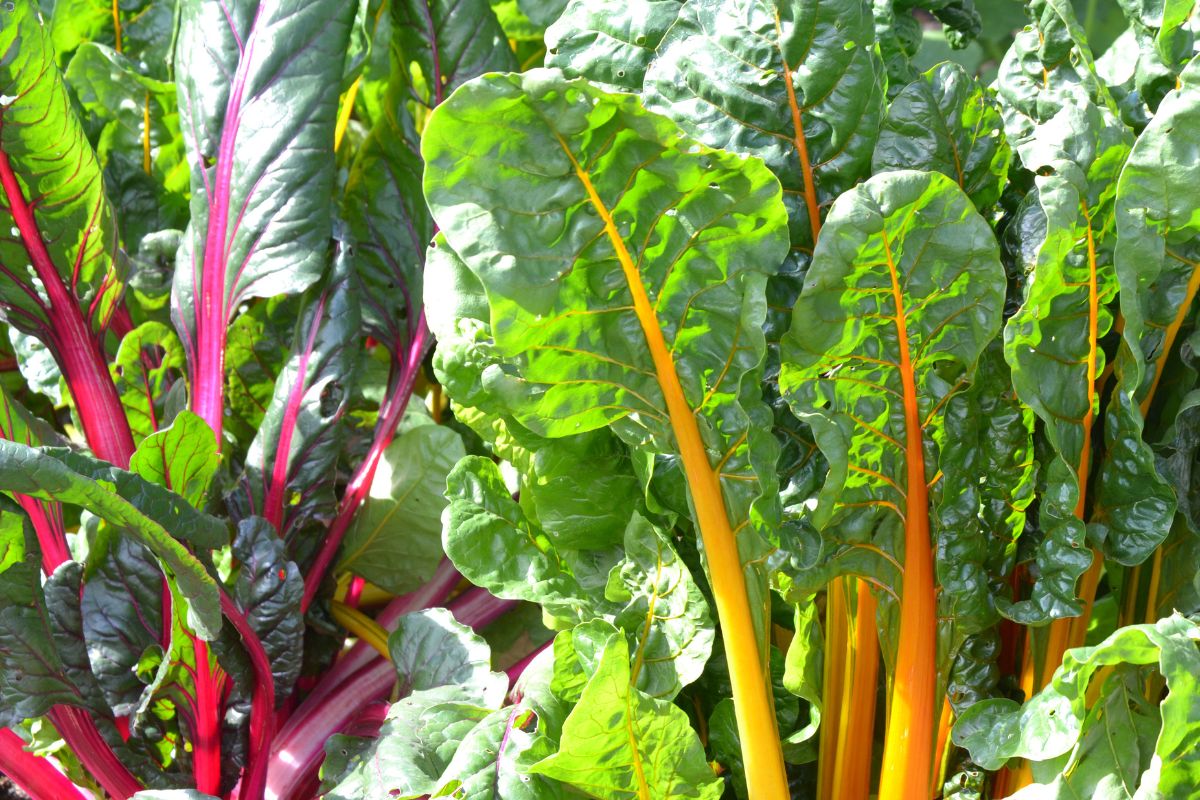
5. Zucchini
Zucchini (Cucurbita pepo) is a very popular vegetable grown by backyard gardeners, and it makes an excellent choice for novices. Zucchini is a quick grower that is easy to sow. The seeds are large enough to handle easily, and they don’t require stratification or soaking. You will, however, need to be careful to avoid planting them too early, as they’re sensitive to cold temperatures – a late frost may kill your plants. Accordingly, some gardeners sow their zucchini plants in indoor trays about six weeks before the last anticipated frost. They can then be moved outdoors to their permanent locations.
Zucchini seeds should be sown slightly farther apart than peas and beans. You’ll want each seed to be approximately 0.5m from its neighbour, and each row should be at least 1m apart.
Insects don’t often cause serious problems for zucchini plants, but larger pests, ranging from possums to birds, may be drawn to your crop, so consider adding exclusionary netting to your garden to keep your plants safe. Zucchini comes in myriad varieties, including ‘Black Beauty’, ‘Golden’, ‘Grey’, and a striped form called ‘Cocozelle’.
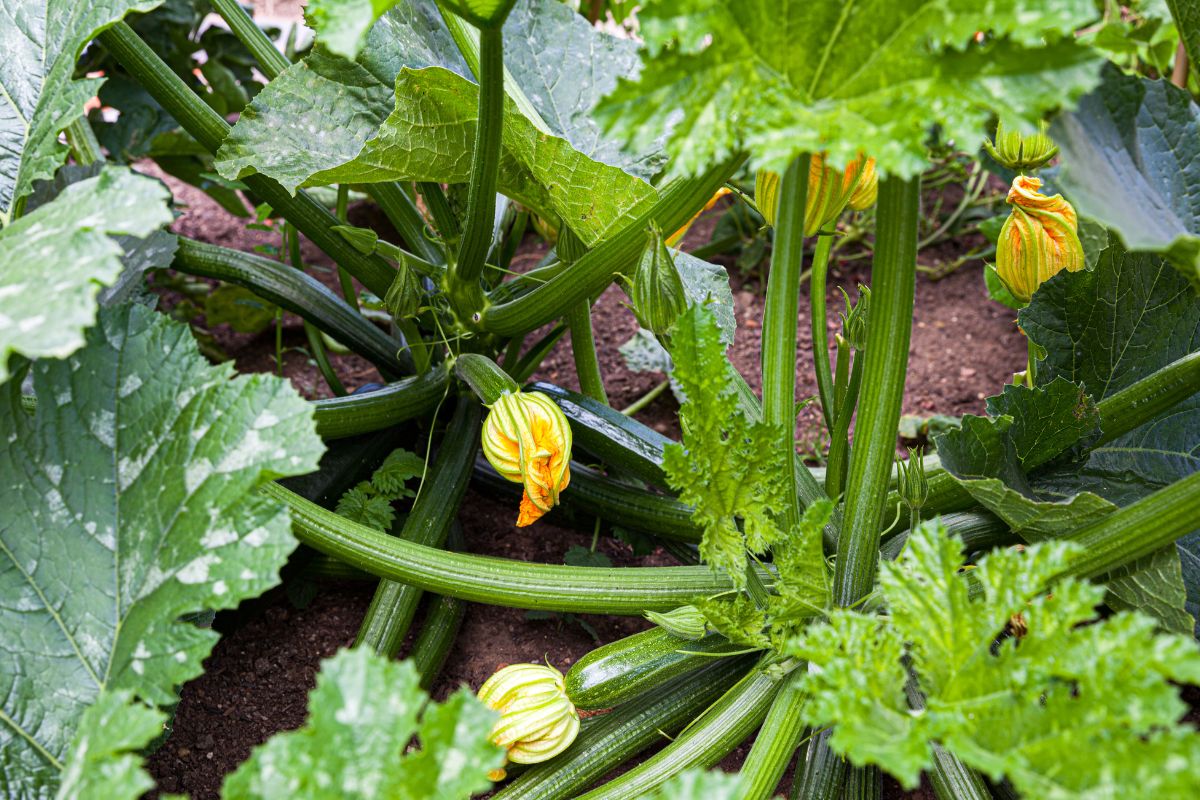
6. Mizuna
A popular microgreen, mizuna (Brassica juncea var. japonica) is another great option for fledgling gardeners. In fact, it’s not only delicious, but it’s also available in coloured varieties, such as purple.
As with most other easy-to-grow vegetable seeds, mizuna can be sown without needing to be stratified or soaked. They can also be sown directly in the garden, though some people opt to start them in trays before moving them outdoors once established.
However, planting them in trays will eliminate one of the biggest benefits of these seeds – they needn’t be planted deliberately in individual locations as mizuna seeds can be scattered. In other words, you can simply roughen the soil surface, sprinkle them in an even layer, and then gently brush the soil back over them. In ideal conditions, the seeds will germinate in about one week.
You do need to be mindful of heat with mizuna, as the plant is prone to bolting in extremely hot weather. You’ll also need to be prepared to deal with pests, as mizuna is susceptible to aphids, cutworms, and cabbage moths.
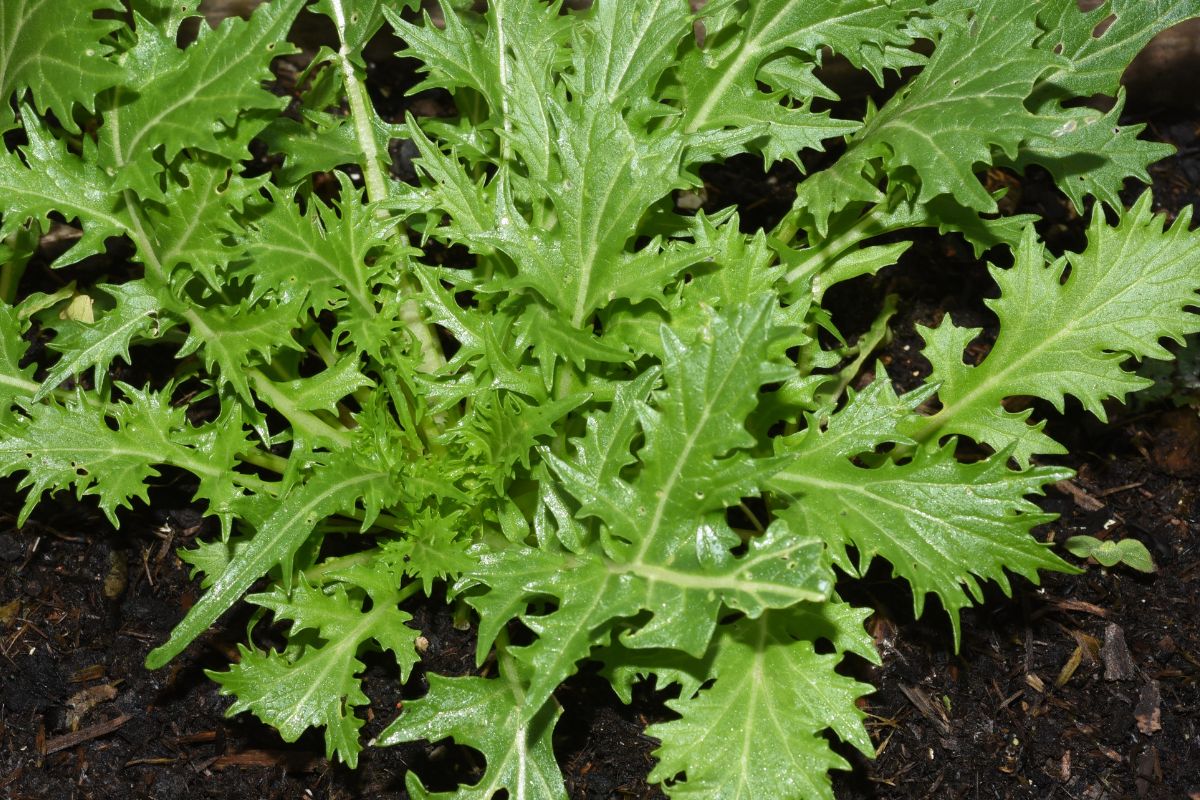
7. Rocket
Rocket, which is also called arugula (or sometimes spelled “roquette”) is another tasty salad green that is a great choice for beginner gardeners.
Just note that rocket, known to botanists as Eruca sativa, is a different species than wild rocket, which botanists refer to as Diplotaxis tenuifolia. The former is sometimes called salad rocket or cultivated rocket to help distinguish between the two.
Both plants are easy to sow, grow, and harvest, but wild rocket is quite a bit spicier than salad rocket. However, wild rocket is sometimes considered a bit hardier, and many find that it will tolerate poorer soil conditions than salad rocket. Wild rocket is also a perennial, while salad rocket is an annual.
You can sow either type of rocket in seed trays or outdoors, and they both grow best in areas with partial shade. This is especially true of salad rocket in warm seasons, as this plant frequently bolts.
You can plant both types in a shallow trench, or simply use the scatter method, as described for mizuna.
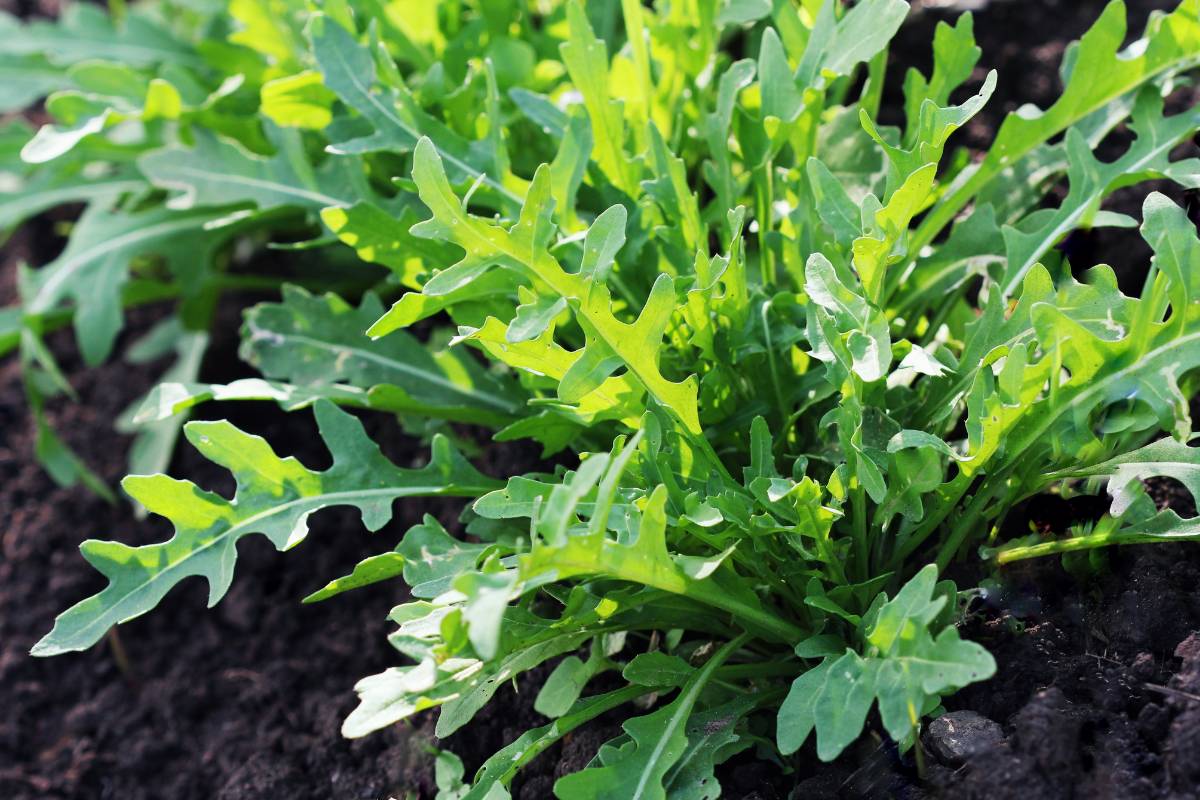
8. Tomato
Tomatoes (Solanum lycopersicum) are not only easy to grow, but they tend to produce high yields relative to the space they take up (there are even dwarf varieties that are perfect for containers). Combine this with their obvious culinary appeal and you have a great plant for beginner gardeners. In fact, they’re one of the most popular choices for first-timers.
Tomatoes can be sown inside or outside – just be sure to consider your climate and geographical area, as tomatoes are sensitive to low temperatures. The seeds are large enough to handle easily, and you can sow them by just pushing them about 5mm deep into the soil. Be sure to give them plenty of space – each seed should be about 50cm from its neighbour, and rows should be about 70cm apart.
The biggest challenge most beginners will face is simply picking a variety to grow, as there are dozens of options available. You can let your dinner-table desires drive your decision if you wish, but it is important to note different varieties of tomatoes grow in different ways. Some tomatoes are “indeterminate”, meaning that they are climbing plants. These will require staking and, often, significant pruning. On the other hand, “determinate” varieties exhibit a bush-like growth habit and do not require staking. Once again, beginners may prefer opting for those that do not require staking, for simplicity’s sake. Given that, beginners may wish to try growing the following varieties: ‘Principe Borghese’, ‘Yellow Grosse Lisse’, ‘Gold Nugget’, or ‘Roma’.
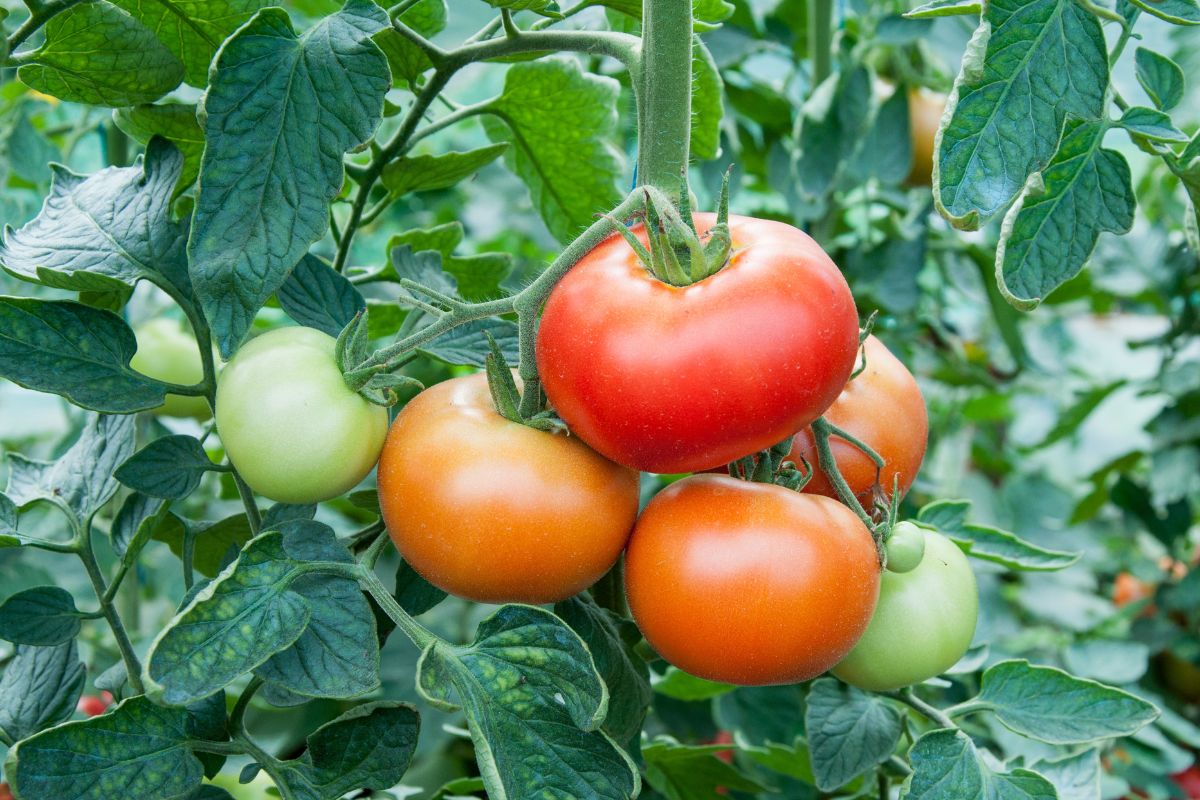
9. Butternut Pumpkin
Want a vegetable that keeps well after harvest? Butternut pumpkin (Cucurbita moschata) is a great choice! And in addition to lasting for some time in your pantry, it has a sweet, nutty flavour that is absolutely delicious.
Like some of the other plants we’ve discussed, pumpkins and winter squashes can grow as bushes or vines. But those that grow as vines do not require staking; they’ll grow right on the ground. That’s fortunate, as one of the best butternut pumpkin varieties for beginners, ‘Waltham Butternut’, is a vine-growing variety.
However, because they form trailing vines, butternut pumpkins need more space than many other plants. Sow the seeds about 20mm deep in the soil, in a place that receives plenty of sun. Place each seed at least 1m from its neighbour, and rows should be 2.5m apart from each other.
Large garden pests may feed on pumpkins, so exclusionary netting is sometimes required. Another problem that sometimes occurs with pumpkins is that they will fail to set fruit, which is caused by a lack of pollination. You can address this by manually transferring pollen from male flowers to female flowers with a paintbrush.
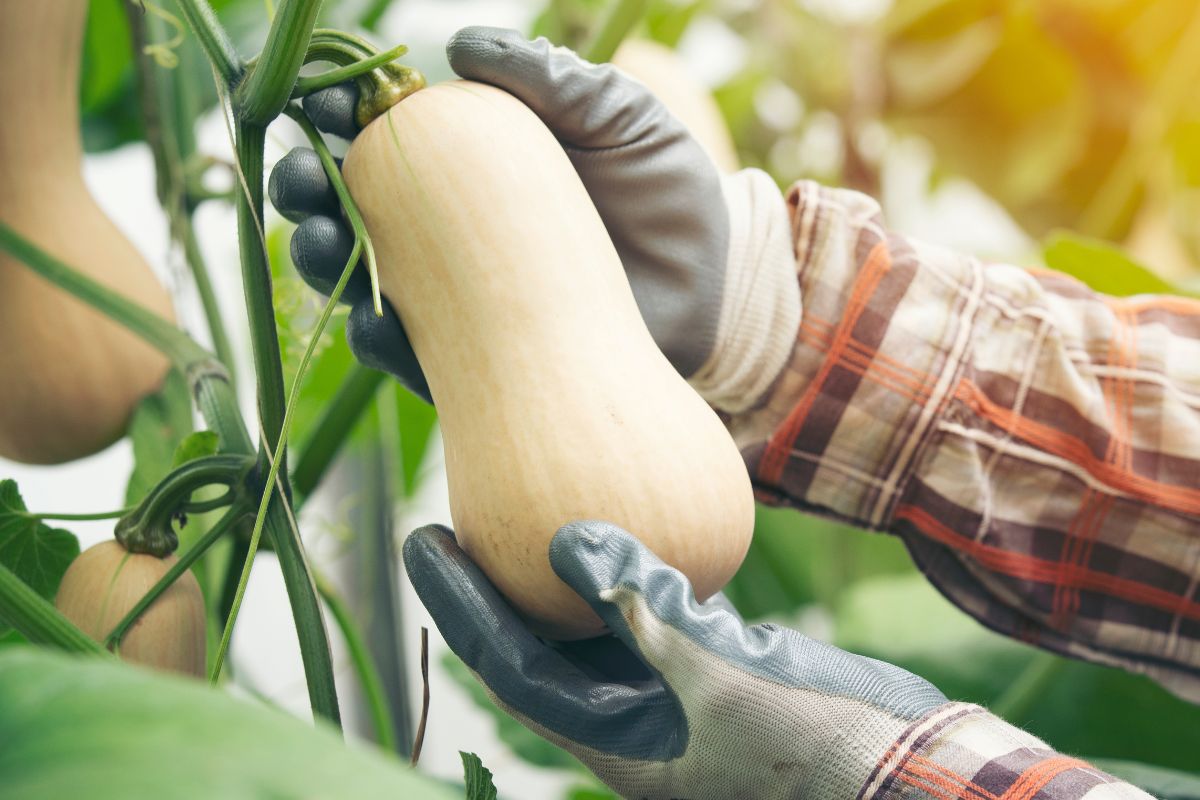
10. Bunching Onion
Known by a variety of names, including spring onions, Welsh onions, and even shallots (which shouldn’t be confused with true shallots, such as ‘Golden’ shallots), bunching onions (Allium fistulosum) can be used in a litany of culinary contexts, from soups to stews, to salads and stir fried dishes.
Unlike some other garden vegetables, spring onions can actually be grown year-round in some climates. They do require full sun exposure though, so be sure to select a suitable planting location.
You won’t need to stratify or soak spring onion seeds prior to planting – they can be sown directly into your garden soil. Alternatively, you can start them in seedling trays and move them outdoors once they’re established. However, because they can be sown with the scatter method, it’s often easiest to just begin outside. Spring onion seeds are rather small, which can create some challenges. For example, a strong wind will cause them to blow right out of your hand. One easy workaround involves simply mixing the seeds into a small amount of sand or fine potting soil.
Spring onions don’t suffer from very many pests or pathogens, but they may be plagued by onion thrips. However, cultural control methods, such as washing the bugs away and mulching around the plants, are often helpful.
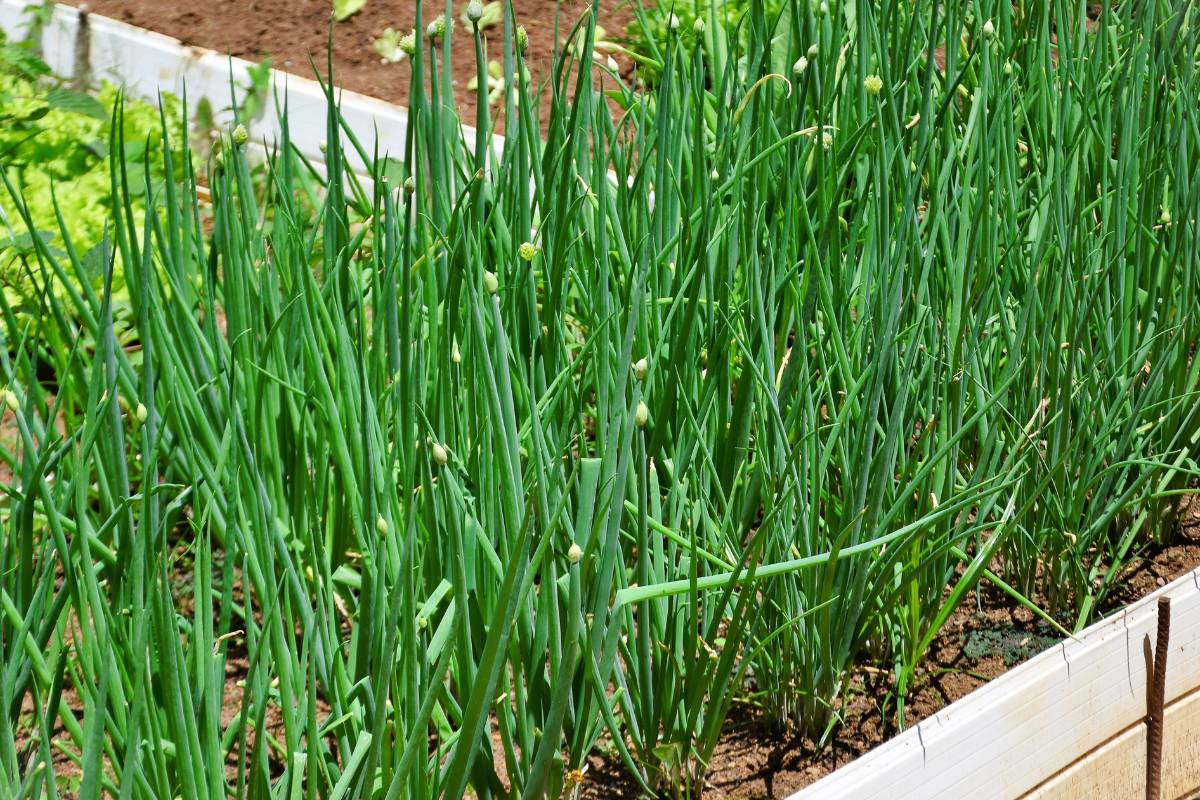
11. Carrots
Another plant that can be grown all year long in some locations, carrots (Daucus carota) are a favourite with gardeners of all experience levels. And like some of the other vegetables we’ve discussed, they’re available in many varieties, which makes them even more appealing. Pro tip: consider starting with a rainbow mix to discover which colour you like most).
Because they produce large taproots (otherwise known as the carrot), you’ll want to sow carrot seeds directly in your garden. Carrots can be grown year-round in many locations, but you’ll still want to avoid planting them during extreme temperatures, as this can cause germination problems.
Carrot seeds can be sown about 5mm deep and space them approximately 5cm from their neighbours. Rows, if used, should be at least 25cm apart. The trickiest part of carrot seed sowing is dealing with the tiny seeds. You can use the same approach as discussed with bunching onions (mixing the seeds with sand), or you can use a pair of tweezers to handle the seeds individually.
Do note that you will need at least 15cm of soil depth to grow large carrots. Additionally, be sure to loosen heavy, clay soils before sowing, and remove as many rocks and pebbles as is possible. Compacted soils and stones can cause forked roots to develop.
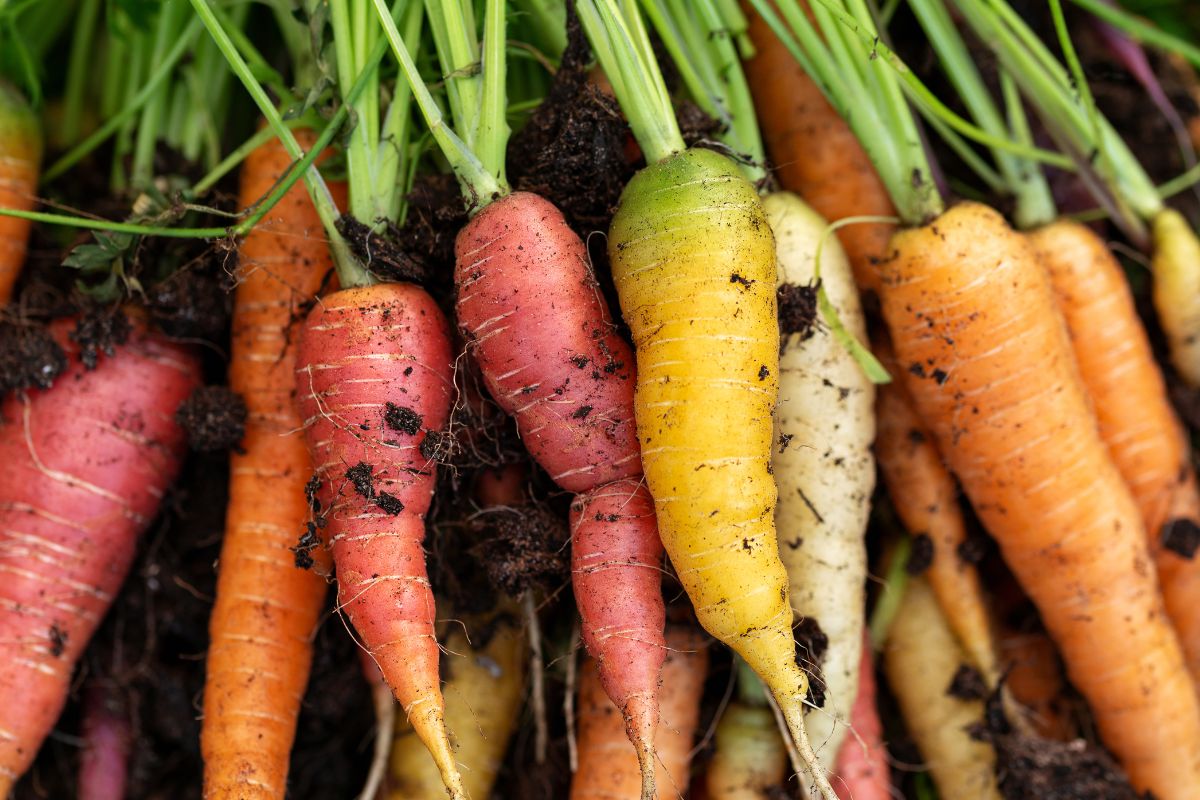
General Vegetable Planting Tips for Beginners
There’s a lot to learn when you start growing your own vegetables, but we’ll share a few general tips that should prove helpful, no matter which vegetables you decide to grow.
- Consider your climate. The most significant limiting factor you’ll face when gardening is your climate – there’s simply not much you can do about the temperatures or precipitation levels in your area. Fortunately, there are crops for almost every type of climate, so you can just pick ones that are well-suited to your area.
- Equip yourself with the proper tools. Unlike some other hobbies, gardening doesn’t require a garage full of gear. However, there are a few key tools you’ll want, such as a good pair of garden shears, a trowel, and some good quality gardening gloves.
- Test your soil before starting. It’s always helpful to know about the characteristics of your soil before you start picking seeds. Some vegetables require specific pH levels or differing mineral concentrations. Some of these can be changed via soil amendments, but it’s easier to simply pick plants that are well-suited to your soil.
- Select the best varieties for your situation. Many modern vegetables are available in an array of varieties, and some will likely be better suited to your location than others. For example, you may need to pick a variety that tolerates more compact soil or less frequent irrigation than others.
- Grow things you like. Above all else, gardening should be fun! So, be sure to pick vegetables you enjoy. And that doesn’t just mean vegetables you like eating – you can also pick vegetables you think exhibit attractive growth characteristics or that you simply enjoy looking after.
*****
Growing your own vegetables can seem daunting at first. There’s a lot to learn, and it can seem overwhelming to those who’re just getting started. Our advice? Jump right in!
To paraphrase the old adage, “the best time to plant some vegetables was yesterday; the second-best time is today!”
We all make mistakes when gardening, but we learn from them and watch our thumbs turn greener and greener with each passing season. Just make sure you start with good seed stock and that you acquire the tools necessary to make the process easier (and more enjoyable).
Your first crop of veggies might not be your best, but we guarantee that you’ll always remember them.
Happy gardening!





